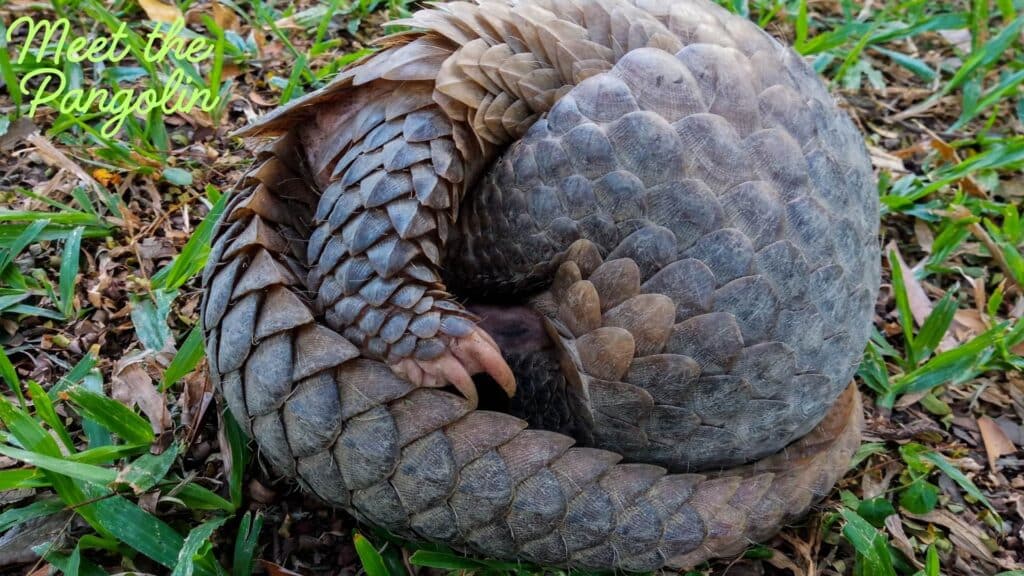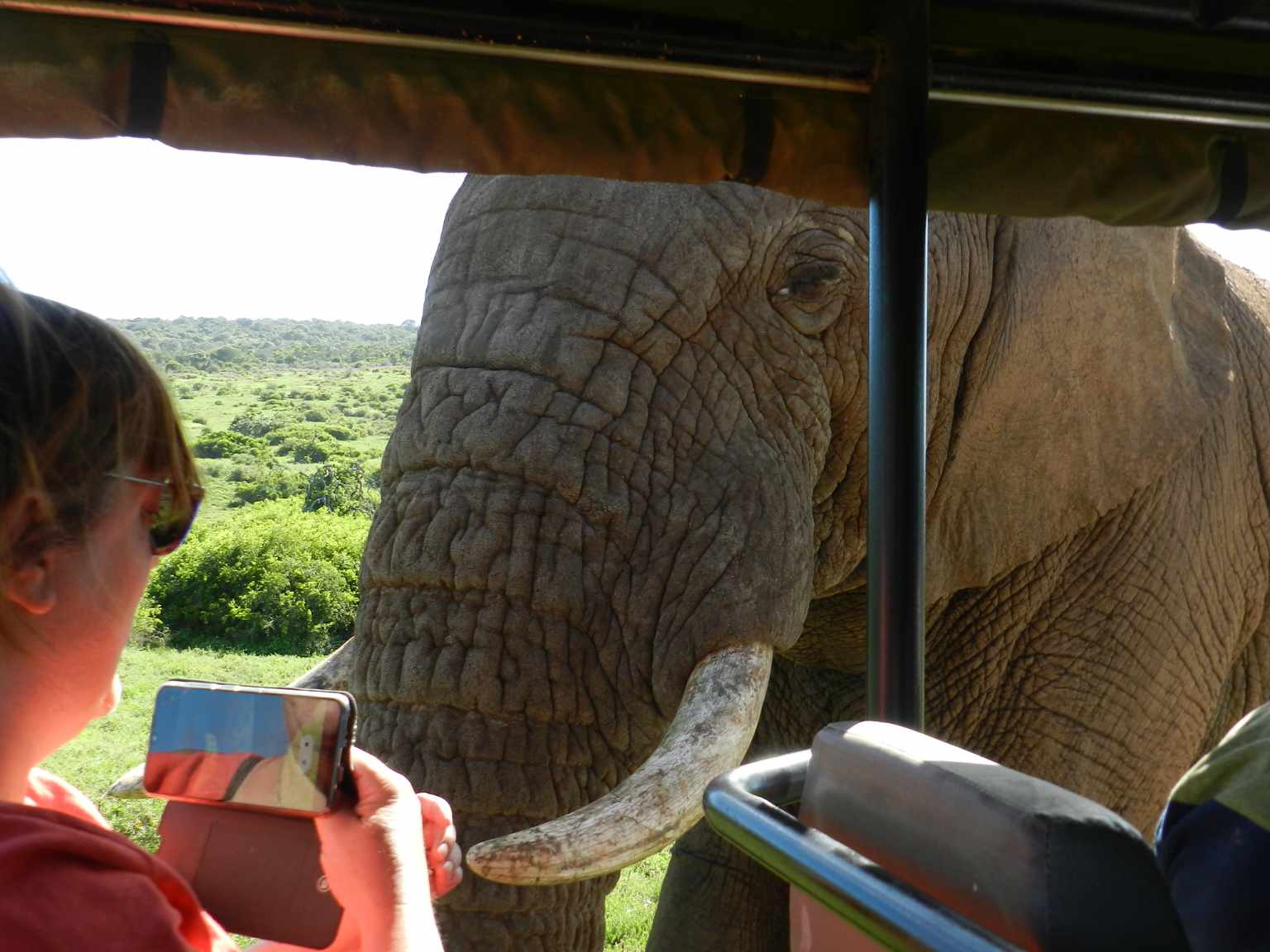Pangolins are some of the strangest and least-known animals in Africa. If you’ve ever wondered “what is a pangolin in Africa?” the answer might surprise you: it’s a shy, nocturnal mammal covered head to tail in tough keratin scales, often called the “scaly anteater.” Despite traveling through Africa quite a bit, I’ve never managed to see one in the wild: that’s how rare they are. For most safari-goers, spotting a pangolin is like winning the lottery. Still, they fascinate me, both for their bizarre looks and for the role they play in keeping ant and termite populations under control.
Meet the Pinecone That Walks
Imagine a pinecone suddenly standing up and waddling across the savanna: that’s pretty much your first impression of a pangolin. These shy, nocturnal mammals are so odd-looking that many safari-goers don’t even know they exist until a guide points one out. And if you’re lucky enough to spot one? It’ll probably look like it’s wearing a full suit of medieval armor.

Pangolins are the only mammals in the world that are completely covered in scales, from head to tail. Those overlapping plates aren’t decorative — they’re made of keratin (the same stuff as your nails) and make up about 20% of the animal’s body weight.
Nature’s Armored Ball
When danger strikes, the pangolin pulls the ultimate trick: it curls into a ball, locking those scales tightly together to shield its vulnerable belly. Lions and leopards may claw and bite, but they can rarely pry a pangolin open. Against natural predators, this defense is nearly foolproof.
Against humans, though? Sadly not. Poachers simply pick up the “armored ball” and carry it away. And that’s part of why pangolins are in so much trouble today.

The Tongue That Outruns the Body
If the armor isn’t impressive enough, wait until you hear about the tongue. Pangolins don’t have teeth. Instead, they rely on a sticky, elastic tongue that can be longer than their own body. In some species, it stretches more than 40 cm (16 inches). Anchored deep near the pelvis, the tongue unrolls like a measuring tape to probe termite mounds and ant nests.
In one flick, they can slurp up hundreds of insects. It’s like fast food, pangolin style.
A Species Under Siege
Unfortunately, these bizarre adaptations have made pangolins one of the most threatened animals on the planet. Their scales are in high demand in some forms of traditional medicine, while their meat is considered a delicacy in parts of the world. The result? Pangolins are now the most trafficked mammals in the world, with over a million poached in the last decade alone.
All eight species (four in Africa, four in Asia) are threatened with extinction. Conservationists often call pangolins “living pinecones,” but without protection, they risk becoming just a memory.
Why You Should Care
Pangolins aren’t just quirky oddities. They play a huge role in their ecosystems, consuming thousands of ants and termites each night — natural pest control that benefits forests and grasslands. Protecting them isn’t only about saving a strange and beautiful animal; it’s about keeping ecosystems in balance.
Safari Tip: Spotting a Pangolin (If You’re Very Lucky)
Pangolins are among the hardest animals to see on safari, but not impossible. Your best chances are during night drives or walking safaris with expert guides in southern Africa:
- Tswalu Kalahari Reserve (South Africa) – One of the few places where pangolin tracking is offered as a specialty activity.
- Phinda Private Game Reserve (South Africa) – Research projects here sometimes allow visitors to join pangolin monitoring outings.
- Okavango Delta (Botswana) – Rare but possible, especially with experienced local trackers.
Travel tip: Don’t expect to tick a pangolin off your list easily. Seeing one is like winning the safari lottery — rare, magical, and unforgettable.
Further Reading
Conclusion and Your Turn
Pangolins are proof that nature’s strangest designs are often the most vulnerable. An animal built to survive lions and leopards now finds itself threatened by people. Raising awareness is one of the best tools we have to protect them.
Have you ever spotted a pangolin on safari — or is it still on your bucket list? Share your story (or your dream sighting) in the comments below.
I wish you a nice safari!
Kind regards,
Lizzy
I now have a YouTube channel as well!
YouTube
Hello Africa travellers!
Who am I? Well, the least you can say is that I am quite crazy about Africa, its nature, its climate, its culture, and more.
As a young woman in my twenties, I had already traveled to several African countries by traveling along in an overlander on my own and mostly camping ( or glamping ) and just fell in love with the diversity of it all.
So much, so that at the age of 26, I went back to university to study biology, which, unfortunately, I couldn’t finish because of health reasons (yes, I got sick from a tropical disease, oh cynicism). But this did not stop my dream of traveling back to Africa several times, and I still do.
My dream was back then to leave Europe and go study animal behavior, especially the elephants (sure, that’s every girl’s dream haha), but I am also very much intrigued by hyenas and other “ugly African animals“.
So, I “kind of” have a little bit of a scientific approach to my articles, when I write about African birds, for example. And most of all: the passion.
But life goes on, you move from one side of the country to the other, you get sick again and top it off with lower back problems, and before you know it, you are over 50 hahaha!
Now, I still travel to Africa, but take it a bit “easier” than the good old camping days, and stay in comfortable, yet affordable accommodations, together with my husband Wouter.
These are some of the countries I have traveled to: Kenya, Tanzania, Zanzibar, Malawi, Zambia, Zimbabwe, South Africa, Namibia, Botswana, Tunisia, and a little bit of Lesotho LOL .
While clearly not being African territory, but Spanish, I also visited Gran Canaria and Tenerife, and location-wise, I consider them “African”, because of their climate and nature, sue me :-p
The last trip I took was to South Africa in the year 2023, and it sure got the fevers for Africa back! From the Barberton mountains to the Drakensberg and the Southcoast, one month wasn’t enough at all to see the whole country, so we’ll be back! At ease and with a little bit more luxury than in my younger days haha!
I wish you happy travels!
Kind regards
Lizzy
